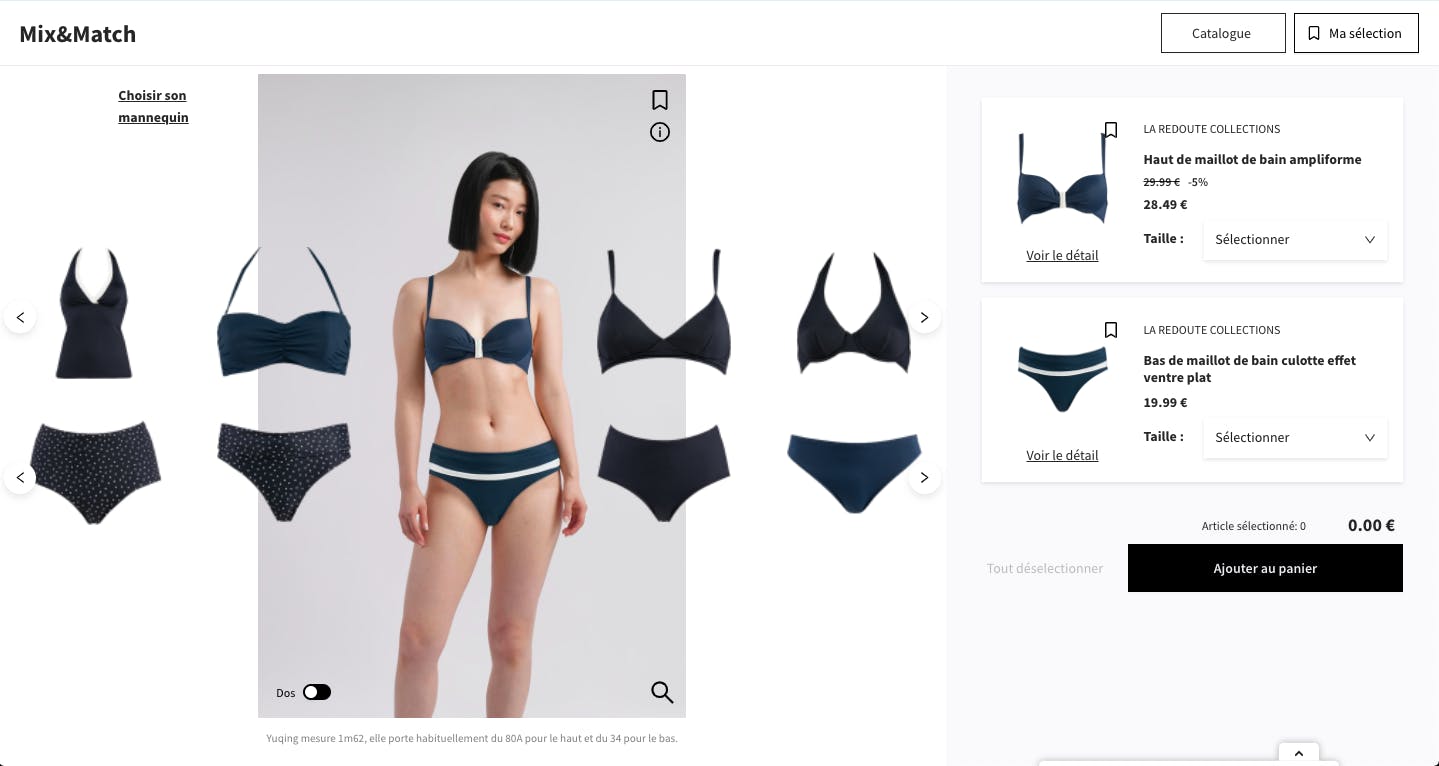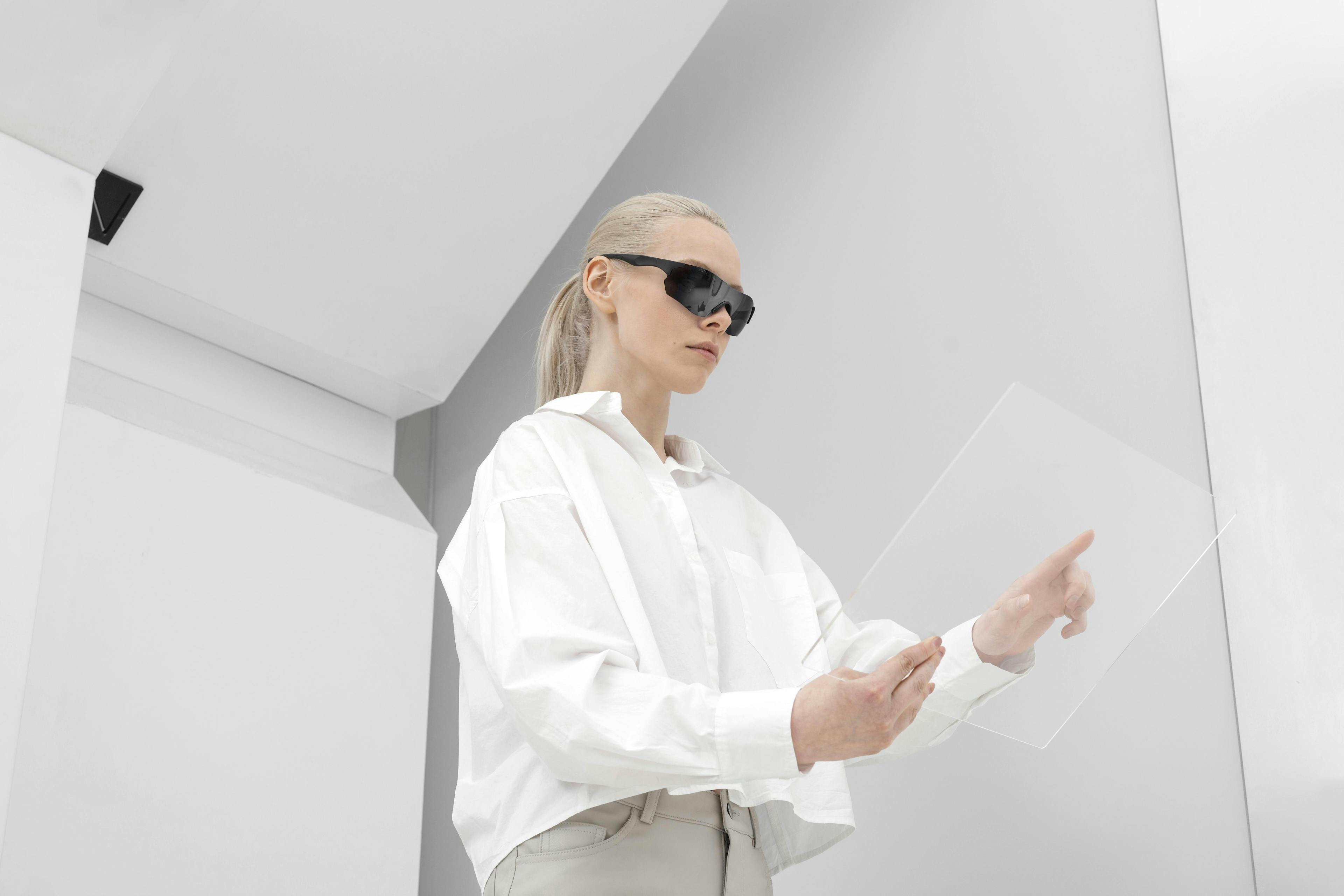
How does virtual fitting improve user journey conversion?
The customer journey of a fashion e-commerce site is all the steps the consumer will go through:
From the search for a product matching the need, to the shopping cart and purchase confirmation.
Virtual fitting experiences improve the conversion of e-tailers by optimizing several essential steps of this user journey.
Virtual fitting optimizes product discovery
The first step in the shopping journey is product research, where the user arrives at an e-commerce site and navigates through the website via the search bar, product sheets or the header.
A study conducted by SaleCycle shows that in the ready-to-wear sector, only 42.5% of visitors to a fashion website consult a product page.
https://www.ecommerce-nation.fr/pret-a-porter-bonnes-pratiques-optimiser-parcours-client-ligne/
So more than half of the users do not consult products before leaving the site, it is therefore essential for e-tailers to succeed in converting the remaining ones.
When arriving on a product page, consumers can only view one garment or outfit offered by the brand.
To view another garment, it is necessary to load a new page or return to the previous page, thus increasing the risk that these users leave the site.
With an optimized virtual fitting experience, users can discover new products with one click:
A "Mix&Match" experience is a great way for the brand to showcase multiple products on one page.
Users can swipe between different garments to dress the mannequin, they can change endlessly and try on any combination of tops and bottoms to compose the outfit of their choice.
An experiment of this type exists at the brand La Redoute, developed by Veesual:

Mannequins that look like users for more projection
After finding the right item, the consumer will imagine wearing the garment.
The same SaleCycle study reveals that out of 100% of users arriving on an e-commerce site, only 11.5% add a product to the cart.
So less than a quarter of the users put in a shopping cart, probably because it is difficult to project in e-commerce, a garment in photo does not always look the same in reality.
To reduce this problem of projection, fashion brands offer images of clothes on mannequins.
However, each user is different, there are as many sizes, skin colors and morphologies as there are consumers, but fashion brands cannot shoot all users.
One possible solution is to offer users the choice between different mannequins of different sizes, skin colors and morphologies.
When customers identify with the mannequins, purchase intent increases by about 200%, according to a study conducted by Ben Barry.
Thanks to this type of experience, users could more easily project themselves and imagine themselves in the place of the models. They would then be less hesitant to put their order in the shopping cart, increasing the conversion rate.
Virtual fitting increases the average basket
One of the last steps in the user journey is the addition of items to the shopping cart.
This is the primary objective of e-tailers, but the goal is also for consumers to add as many items as possible, thus increasing the average shopping cart.
Another study by VE Interactive reveals that the highest average baskets are spread over two key times of the year: Black Friday and the Christmas vacations.
During these key moments, the average basket can explode, but quickly returns to its initial values after December.
So we need to find new ways for consumers to add more product to the cart:
If users could view the outfit of their choice with any piece from the collection, they could put together their own outfits.
By seeing complete outfits, they could project themselves even better in these outfits and add more items to the cart.
By adding more items to the cart, consumers are also increasing the conversion of e-commerce sites.
The virtual fitting of clothes allows to improve the conversion through several steps of the user path:
- By optimizing product discovery with new ways to navigate an e-commerce site.
- By allowing users to project themselves more easily into the mannequins and reduce hesitation.
- Increasing the average shopping cart through innovative experiences in which consumers can compose entire outfits
Want to know more about how to improve your site's conversion with virtual fitting?
RESOURCES
Discover our new article

"Complete the Look" Banners : is it enough ?
Scroll through any product page on a fashion eCommerce site and chances are you’ll see it: a “Wear it With” or “How to Style It” section, usually nestled just beneath the product. These are variations of what many fashion brands refer to as “Complete the Look” banners—a quick way to suggest complementary items that finish an outfit.

Has Online Shopping Lost Its Spark?
For years, e-commerce has delivered on convenience, speed, and scale. But something essential may have been lost along the way: the joy of shopping.

5 Ways Virtual Fitting Can Elevate Your Fashion Brand’s Online Presence
Virtual fitting has become a must-have in fashion e-commerce. Just like everything in fashion, ignoring the trend means falling behind. Virtual Fitting is more than a nice-to-have, it boosts your online shopping experience while making it more accessible and engaging for everyone.
